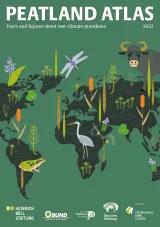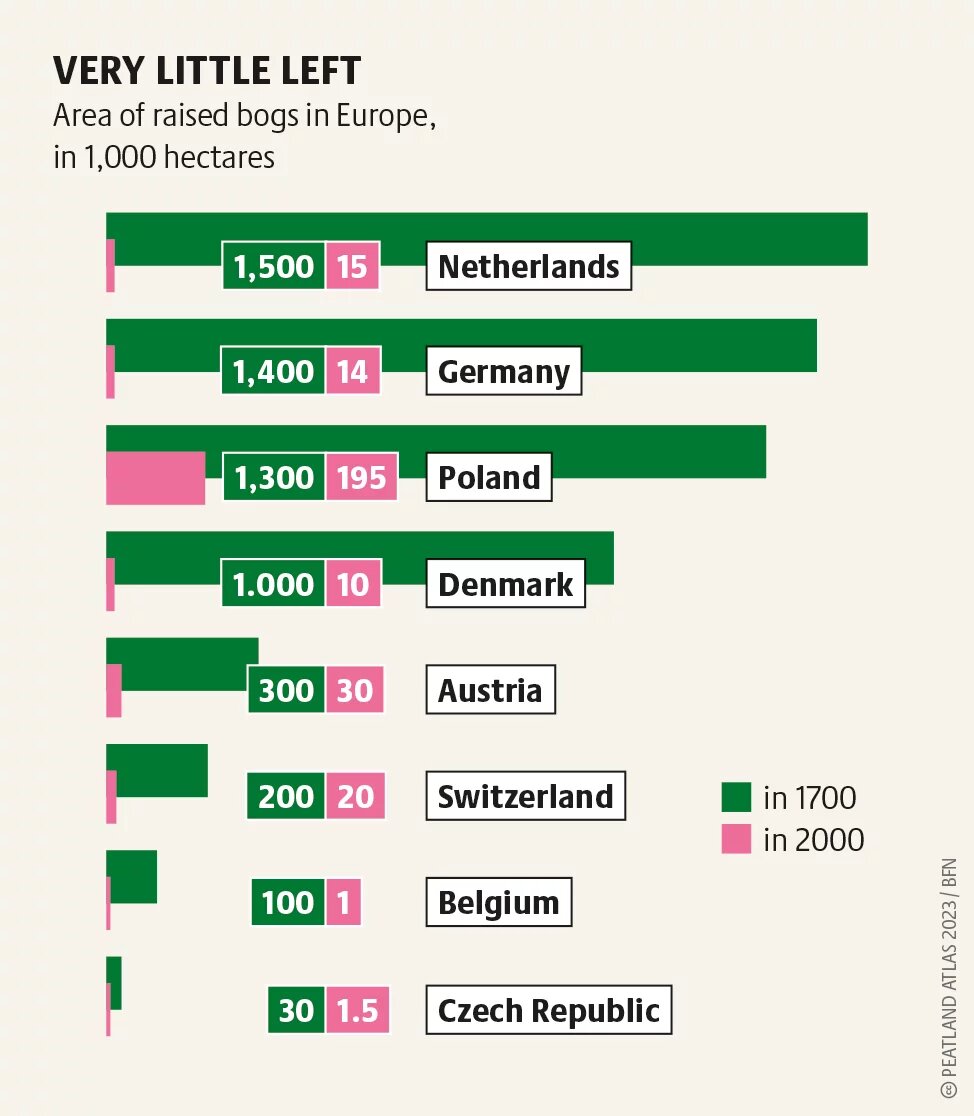
People have been using peat for heat since the Bronze Age. They still do so today in countries like Finland, Belarus and Rwanda. This is not sustainable – but there are new, climate-friendly ideas for how peatlands can help generate heat and power.

Extracting and burning peat not only destroys layers of organic matter that have accumulated over thousands of years. Extracting the peat requires draining the peatland, releasing huge amounts of carbon that had been drawn from the atmosphere and stored in the ground in the form of peat. Although it has long been known that burning peat affects the climate, the material is still extracted for energy, mostly from raised bogs. In 1999, over 21 million tonnes were extracted in Europe alone, mainly in the northern and eastern parts of the continent. Different reporting standards across Europe mean that there are few reliable figures for more recent years. Peat is still an important energy source in Belarus and Finland. In 2020, peat accounted for 3.4 percent of Finland's total energy consumption. The Finnish state is a major shareholder in Fortum, an energy company that is helping to build a peat-fired power plant in Rwanda, among other projects. This climate-damaging but potentially very profitable project is being carried out under the guise of development aid.
The Rwandan government has commissioned two peat-fired power plants, one at Gishoma, near Lake Kivu, with a capacity of 15 MW, and the other at Gisagara, on the Akanyaru River, with a capacity of 80 MW. The Gishoma plant was due to start operating in 2017 and the Gisagara plant in 2020. According to projections, by 2024 peat will account for 17 percent of the country's energy mix. However, both plants have yet to come on stream due to furnace malfunctions and seasonal flooding. Nevertheless, peat extraction is already underway near both plants, with some of the peat being used as fuel by nearby cement factories.
To stop the destruction of peat and the huge greenhouse gas emissions caused by drainage, the waterbody in peatlands must be restored to its original level. This rewetting process goes hand in hand with other forms of land use. One way of reconciling agriculture and peat conservation is paludiculture. This type of peatland use depends on high water levels. Biomass from paludiculture offers the opportunity to switch regional energy supplies to renewable resources. It is not dependent on wind and sunshine and can therefore be an important part of the energy transition. Unlike wood, the biomass can be harvested every year. Burning it releases only as much carbon into the atmosphere as was sequestered in the previous year – not over decades as with wood. Despite harvesting the above-ground biomass, peat can still accumulate because plants such as sedges produce peat from their roots, which are not harvested. They remain in the wet soil and turn into peat over the years. Biomass from paludiculture can be used in thermal power stations or biogas plants. Suitable species from wet meadows include sedges, reed canary grass, as well as reeds and rushes. Their biomass can be burned using combustion systems adapted to the high ash content and critical components of the biomass. This avoids unwanted emissions of carbon monoxide and nitrogen oxides and prevents premature wear and tear on power plants. Biodiversity also benefits when mowing is scheduled outside the breeding season of reeds or meadow breeding birds. Biomass must be harvested when dry, as only dry material has a high calorific value. Once dry, it can be rolled into bales for storage or pressed into pellets. Pilot projects show how this can work. Since 2014, a power plant in Malchin, a town in northeastern Germany, has been producing 3,500 megawatt hours of heat from local wet meadows. This is enough to supply around 500 homes, as well as several schools and offices, via a heating network.
Wind turbines and solar farms can also be built on peatlands. But up to now the necessary rewetting of peatlands has often not been taken into account in the planning of such wind and solar farms, even though it is essential for meeting our climate targets. The systems that have been built are not adapted to wet conditions, which hinders peatland restoration and thus the reduction of greenhouse gases from peatlands. A further difficulty is that rewetted peatlands need to develop a continuous vegetation cover to protect the peatland. Solar farms must therefore allow enough light to pass through to ensure plant growth under the solar panels. There is still a lack of suitable demonstration sites where it can be clearly shown that such renewable energy systems can be successfully installed on wet and unstable soils.
One step in this direction is Germany's Renewable Energy Sources Act of 2023, which prohibits subsidies for solar farms on drained peatlands, but provides additional financial support for solar farms on permanently rewetted peatlands that were previously used for agriculture. As peatlands also play an important role in preserving biodiversity, experts are urging that the feasibility and environmental impact of such systems is tested first. Depending on their suitability and the rewetting process, solar farms on peatlands should be restricted to drained, degraded or cultivated areas outside actual or potential protected areas. And the effects of wet peatlands and solar farms to each other need to be monitored in order to counteract any negative consequences.


